Category — Features
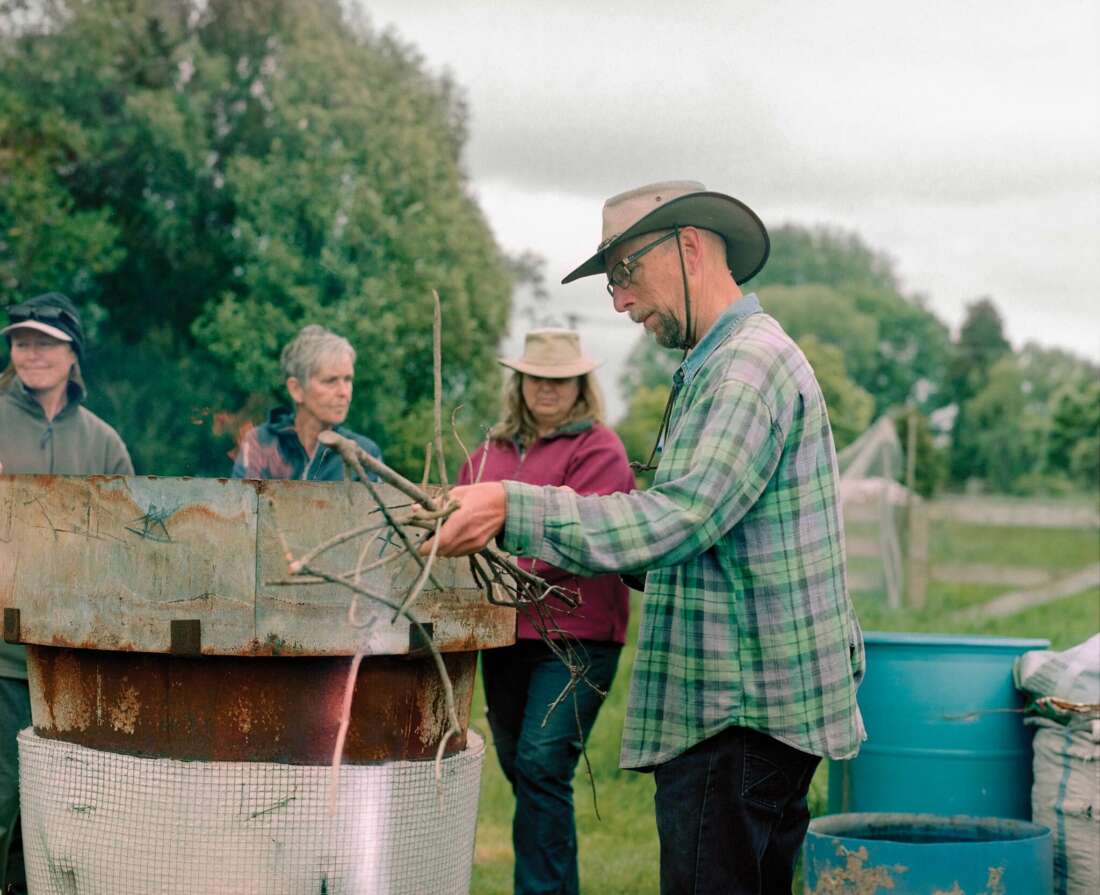
Liberating local food from lockdown
My family lives on Slow Farm, a little patch of sort-of rural land on the edge of a village in the Manawatū. Ashhurst is the name given by settlers, in honour of a man who never set foot in Aotearoa, but tangata whenua called it Otangaki, referring to the act of weeding and cultivating the fertile loam soils left when the Pohangina and Manawatū rivers flooded.
A pā site looks across these river bottom flats to the mouth of the Manawatū Gorge from an elevated terrace, an ideal spot to stay high and dry and keep watch over the crops and take note of people’s comings and goings. This was, and still is, a meeting space, a spot for crossing the rivers and mountains, and a waypoint for travellers in all directions. Tōtara grow straight and tall in the deep alluvial soil and the trees in a remnant grove at the bottom of the Domain were prized for waka and whakairo. The roots of growing and giving food are deep in this place.
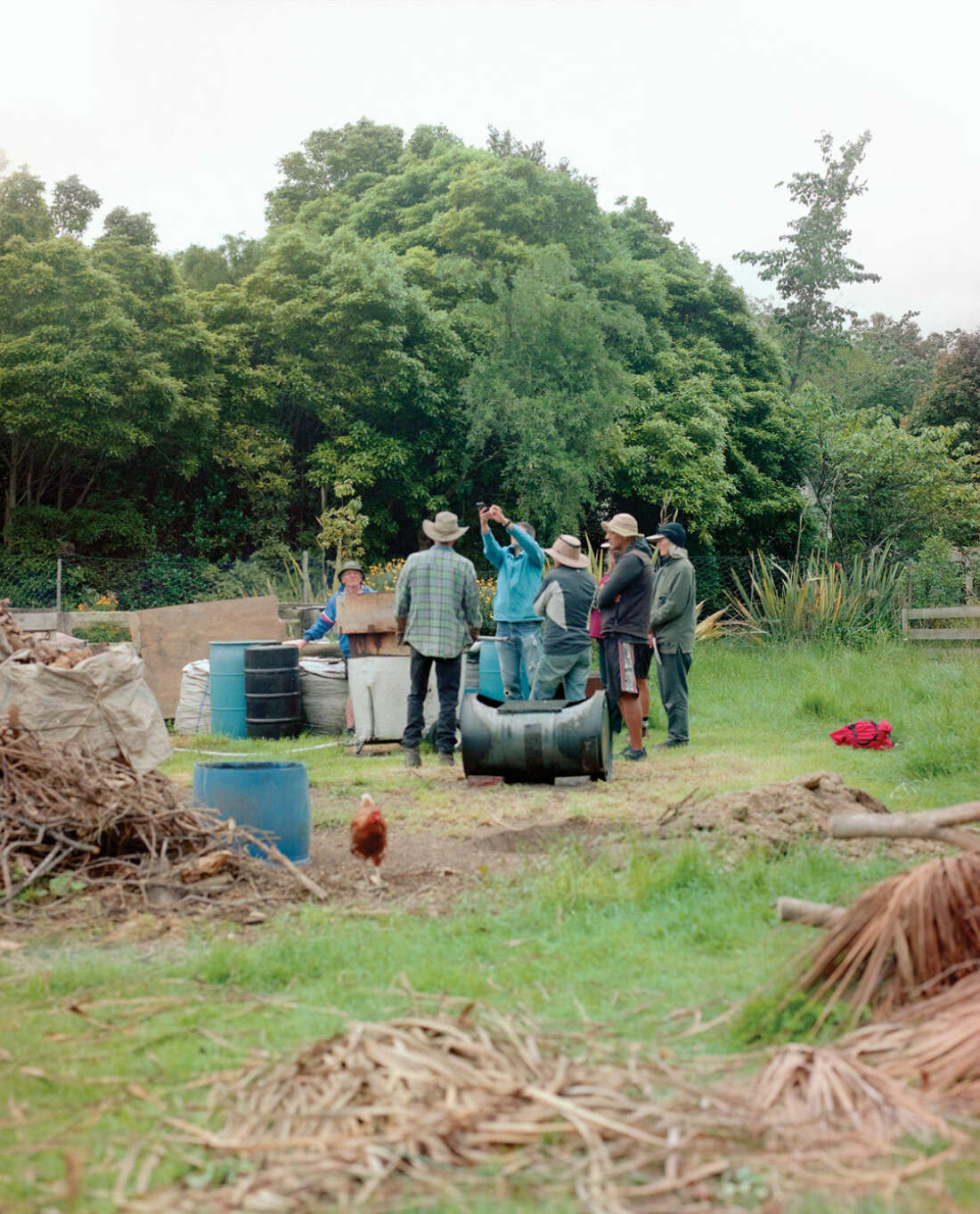
When the ripples of a spreading virus began lapping at the shores of our islands, it was late in the hot and dry summer. Grass had browned off across the entire region and local farmers were already making tough choices at the same time that public health doctors and epidemiologists were advising our government to get in front of the bigger waves that were advancing. I started cutting willow branches and taupata for our hungry steer, and kept an eye on the maturing corn stands and made mental forecasts of when I could strip the ears and turn him in to devour the stalks and leaves. In the middle of the big dry, we were told to stay home, keep our distance, and hunker down as an invisible storm raged across the world. My family had, thanks to our modest but real material privilege, plenty of food in the pantry, in the ground, and out in the paddock, but nevertheless the problem of sustenance became the foremost thought in my head. How could we use our place in the community to make food more available locally?
I wasn’t the only one who was fixated on this. Ashhurst and the Pohangina Valley are home to a dedicated group of volunteers and enthusiasts committed to social and environmental care. Our local community resilience group, RECAP (https://recap.org.nz/), was already working behind the scenes on several efforts with individuals, other organisations, and the Palmerston North City Council (PNCC). RECAP coordinator, Helen King, recalls how the heightened awareness of food insecurity combined with the stringent conditions of lockdown. “It’s an enormous part of what we do, through the gardens and the orchard, the sharing shelf and our education workshops and events. Where it became very difficult was that as everything heightened, we had to close those facilities down.”
So much of what the volunteers had been preparing for and had wanted to do was suddenly off limits, or much harder to achieve. The sharing shelf had become a daily stop on many people’s rounds, whether to drop off a bunch of plums or a bundle of greens, or to grab a choice couple of pears, a marrow, a bag of walnuts. Non-contact rules and safety guidelines meant this was now considered too hazardous. A seed saving workshop was cancelled at the very time when people were looking for more sources of edibles and keen to get started growing their own.
But several of us did have stockpiles of seed. Autumn was on our doorstep and this was the time to start all the cool-season green crops: the cabbages, kales, caulis and ubiquitous silverbeet. We planted out dozens of flats, starting seedlings to give away to anyone keen to try their hand at growing a bit of fresh produce for their whānau. By the time the country moved from alert level 4 to 3, King had collected orders from at least 70 people around the village for seeds and plants.
“The garden centres were all closed at that stage, but beforehand they got decimated – everyone went in and wanted to grow things – so we knew this was the best way we could actually help people feed themselves,” King recalls. “From the feedback I’ve had, this was greatly appreciated. And what we found on the other side is that the education programmes are even more subscribed: we’re selling out across the board as people have started to think more about their level of personal resilience and explore more about how they can actually pursue that.”
King says that Ashhurst’s sharing culture got a boost with the launch of a seed library post-lockdown. “That kind of completes the loop by encouraging people to plant their own, grow it, and donate it back through the sharing shelf. Ideally, they keep some of the seed as well…for a lot of people, even seeds are a luxury: for some things you’re paying $4 or $5 a packet, and not everybody can afford that. So, being able to share those with people is really important.”
In between bouts of doomscrolling and the Zoom meetings that seemed to multiply like bunnies, I watched for hints of rain. I worked in the garden and split firewood. The pile of logs had been dumped by the local arborist near the northern edge of the paddock, where a public walkway connects the interior streets of the village with a large playing field and the path along the river terrace. As with every other populated location in the country, suddenly everyone was out taking walks, and my gradual progress in whittling down the mountain of logs and building a picturesque round Nordic woodpile provided easy opportunities for strangers to introduce themselves as they passed by the gate.
As I stacked the last pieces, I looked at what must have been the better part of a cubic metre of half-rotted wood chunks, bark and the detritus left by beetles and worms already feasting on the bounty. I decided on the spot to pile it into mounds and make a few garden beds in this sunny public-facing spot, wondering if that might spark conversations along the way. I popped broccoli, hardy oak leaf lettuce, and mustard greens into the dark mulch and crossed my fingers that the clouds would offer more than a few sprinkles. I picked the ancestral corn that grew from a few ears given by a permaculture classmate and let the steer munch the nutritious greenery.
We rolled into May and finally got some serious rain. I carted a carload of seedlings to Helen’s house and left them on the verge for her to distribute. Then, in the middle of the month the country went to COVID alert level 2 and things started to look and feel a little bit like normal. But who really knows what normal is now? I suspect that most of us, whether or not we had our doubts beforehand about the viability of our globalised, just-in-time supply chains and ridiculously leveraged consumer economies, had just watched the wheels come off the capitalist bandwagon and were more than a little bemused by the voices calling for everyone to get back to whatever it was we were doing before. As if we could step in the same river twice.
The connections in our community were still there, but some of the threads were frayed. I went down to the food bank and talked with Zosha, Kirsty and Jody, three of the volunteers who are at the front lines of food insecurity. They’re glad to be back in “the office,” the room in the back of the old Methodist church hall that opens one afternoon a week for people to come and get what they need. For them, this is a piece of their social landscape that went missing during lockdown, when they had to close up shop.
For the duration of alert levels 4 and 3, PNCC partnered with Methodist Social Services, the Salvation Army, and Just Zilch, a free food outlet in Palmerston North (https://justzilch.org.nz/), to deliver food to anyone requiring assistance. Money from central government has also flowed to councils and food security providers to assist purchasing and logistics. The council used an 0800 number into its call centre and online presence to collect requests, and staff helped the agencies with intake, sorting and distribution. Much of this collaborative structure, including Ministry of Social Development (MSD) funding, has remained since alert levels were eased, and the food bank staff say that this has streamlined things, especially in terms of provisioning. “We’re getting a lot of our supplies directly from Just Zilch now instead of having to go and do lots of shops,” says Zosha. “It’s good that they’re more coordinated because we’re not getting as much in donations.”
Part of the social network that used to be central to the food bank has fallen away and not returned. Zosha misses the ones who don’t come. “Even since we reopened, none of our pensioners who used to get food have come back. They’re probably getting what they need delivered now, and don’t want to take the risk of coming in contact with people. I see them out and about and want to check in, ask how they’re getting on.”
Kirsty notes how the tightening economic situation has hit beneficiaries and the stringent lockdowns were tougher on them for plainly practical reasons. “When you’re on a benefit, timing is everything. You get different payments on different days of the week, so you plan when you’re going to which shop. For a solo mum with small kids, suddenly going into the city to stand in the queue for two hours at the PAK’nSAVE was not an option, so you had to pay the higher prices at the little shops here in the village.”
And those prices jumped the minute the country went to level 4, according to Jody. “Sugar went up a dollar a bag. Bread went up fifty cents a loaf. I asked the shop worker about it and he just said his boss told him to mark them up. The government needs to get onto this sort of thing, because it’s just big chains taking advantage of the situation.” It wasn’t just all the urban middle-class folk suddenly discovering baking and wiping out all the flour from the shelves, apparently. There might have been some old-fashioned profiteering behind some of it.
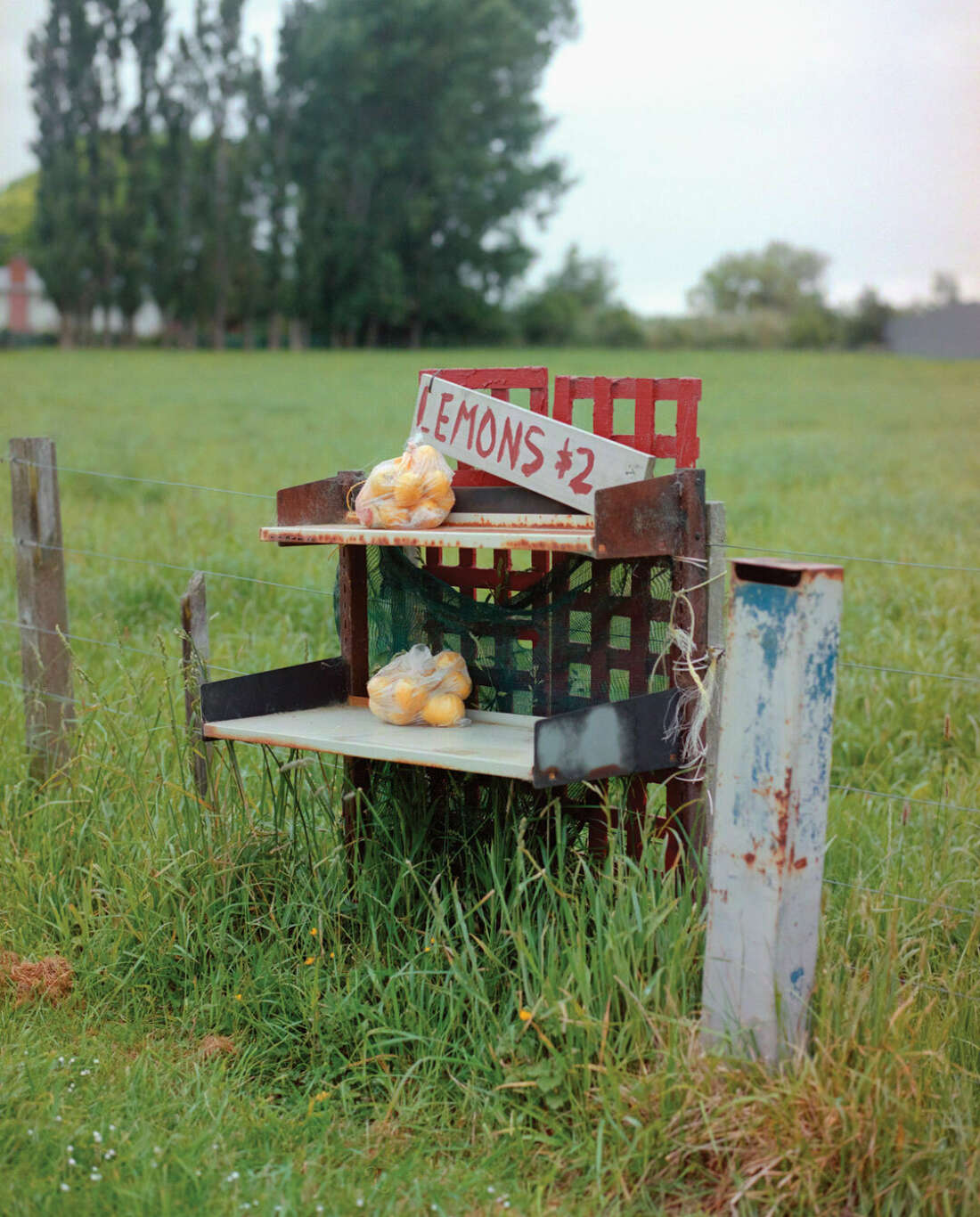
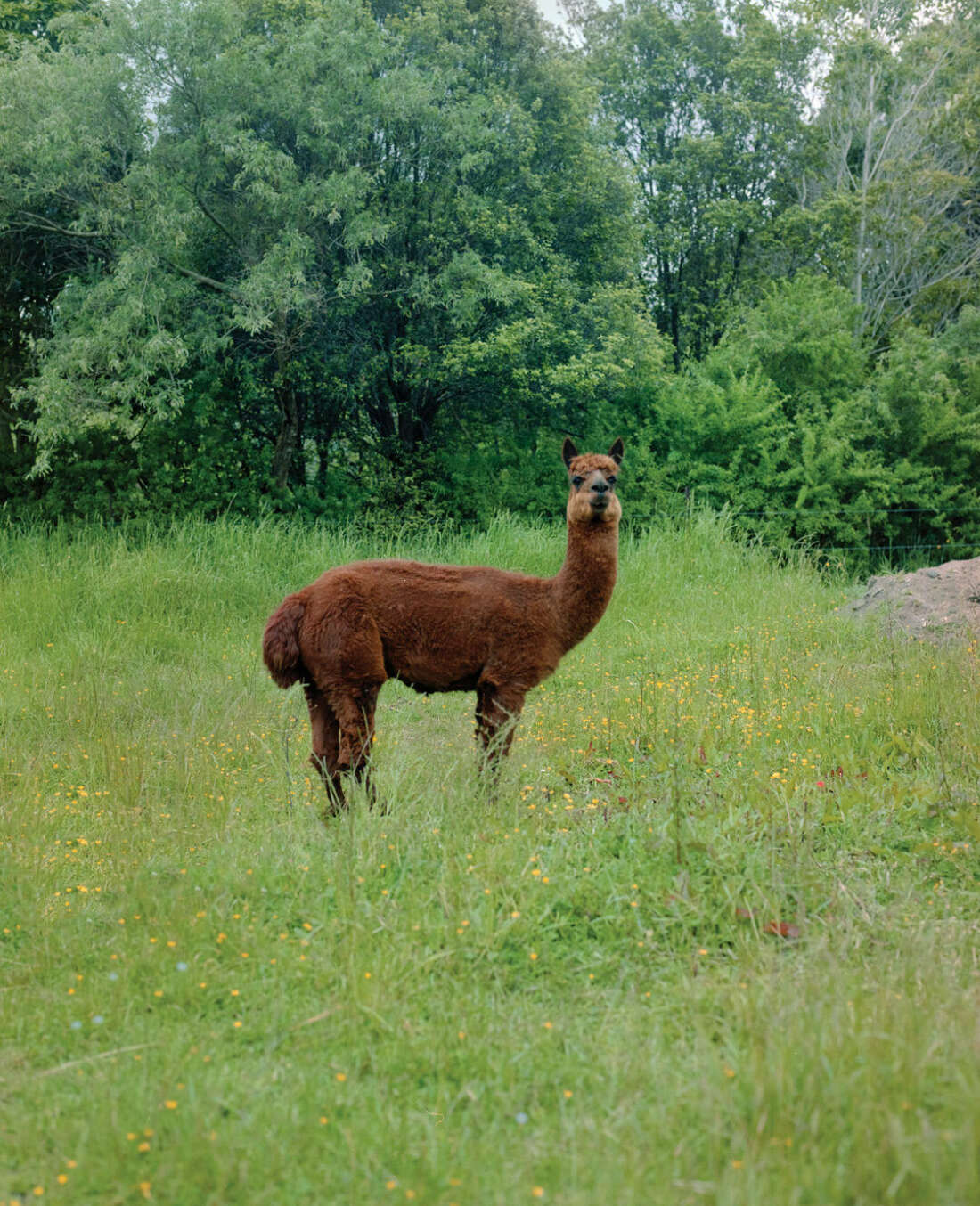
But hearing how the local councils, both Palmerston North and Manawatū, swung into action and worked in cooperation with the nonprofit and voluntary sector to meet needs in the moment is a real validation of what we haven’t lost as a society. In spite of over thirty years of hard-core market liberalisation, we haven’t yet, unlike some other “advanced” countries around the world, allowed our local bodies to become entirely hollowed out, selling off assets and outsourcing all core services to the private sector. Indeed, we still have councils who can do the things that they are good at, and do them competently, at scale, and under pressure. In our fortunate corner of Aotearoa it has served us well during this pandemic.
“They were good on a couple of levels,” King reminds me. “They did that really overarching high-level stuff with the emergency food providers, but also, early on in the game, they met with a set of people who definitely had a stake in some of these discussions, including providers like RECAP and people who were interested in food resilience. We all did a Zoom – I think it was about ten or fifteen of us – just around what we were all doing and how it might work. They knew who was out there and they used that to everyone’s advantage by bringing us together… They’ve worked on relationships with the sector and it’s more of an ‘us’ rather than an ‘us and them.’ That’s the resilience that they’ve created.”
My woodpile beds grew over the winter and we’ve had meals from them. Foot traffic along the walkway diminished as quickly as it blossomed, and I never did have the spontaneous chat with anyone about what on earth I was going to do with those monstrous mustard greens. I made curry with them: saag, with lots of butter and cumin. In Takaro, the part of Palmerston North around the arena, I visited a home where a front lawn had also been converted to growing food. Helen Lehndorf, coordinator of the Manawatū Food Action Network, decided that instead of struggling to garden in the shadiness of their leafy back yard, she could claim the sun-drenched front. And so another lockdown garden was born.
The lawn is gone, buried beneath a deep layer of wood chips. A profusion of multicoloured silverbeet, kale, flowering borage and calendula, with bees all around, beckons the visitor to meander along the beds. And over the fence, a decrepit steamer trunk overflows with edible flowers and herbs next to a painted bench on the footpath. Lehndorf puts bunches of produce in a box above the trunk and neighbours pick them up as they walk past. She tells me how her husband has become “a bit of a fanatic” about compost and she treasures the addition of the homemade fertility to the new growing space.
We head indoors to continue talking food, and turn to definitions. Is there a substantive difference between food security and food resilience? It turns out that there is an entire continuum – from food insecurity, which is simply not having enough (or the right kinds) at all times, through food security, defined by having continuous access to sufficient and culturally appropriate food, and carrying on to food resilience and food sovereignty. “Food resilience is not just being able to afford to buy food, but also having other food skills: being connected into community so that localised production is part of the picture of how you access your food,” Lehndorf explains. “Food sovereignty includes connectedness to place and ancestry in your community, so that you not only can afford food but you have total empowerment over what sort of food you eat and where it comes from.”
Food insecurity can be addressed by quick fixes, but this means that food security is by nature ephemeral and at risk. Food resilience requires building skills and connections, many of which have been lost or broken as people become more transient and alienated by the requirements of our industrial economy, but once you have it you can begin the journey to food sovereignty. In many cases, this will be a multigenerational affair and far more complex than some simplistic call to get “back to the land” or back to one’s roots.
“Food resilience can be manifold, from basic kitchen skills like meal planning and avoiding food waste, to larger skills like being able to grow food and then knowing what to do with it,” says Lehndorf. “We’re not going to solve social justice issues by teaching people how to grow some silverbeet. But it is a gateway drug.”
Mentoring, scaffolding and other support techniques can help people gain these skills in the absence of the way they were traditionally handed through the generations – a child helping in the kitchen or following a parent through the garden. Now we have volunteer networks and community organisations like Supergrans (supergransaotearoa.org.nz), which teams up someone experienced at one or more of these life skills with someone who wants to learn. And through a variety of spaces where food sharing takes place, we have entry points where the curious can learn by watching, by asking, or — most importantly — by doing.
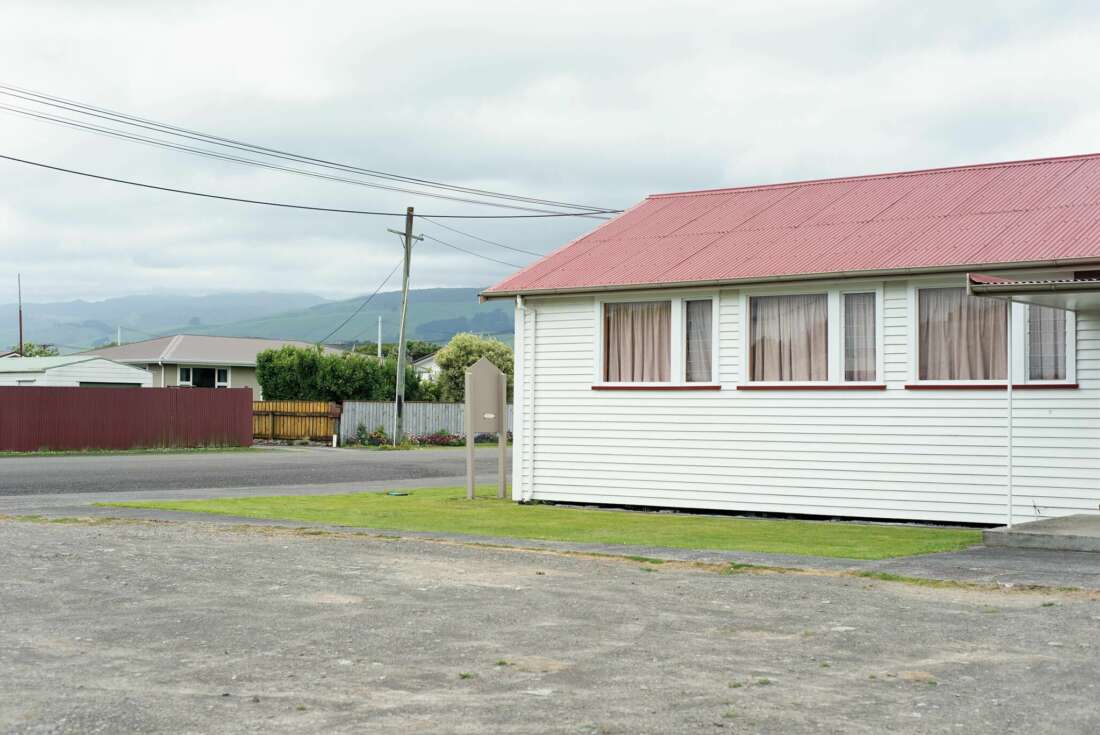
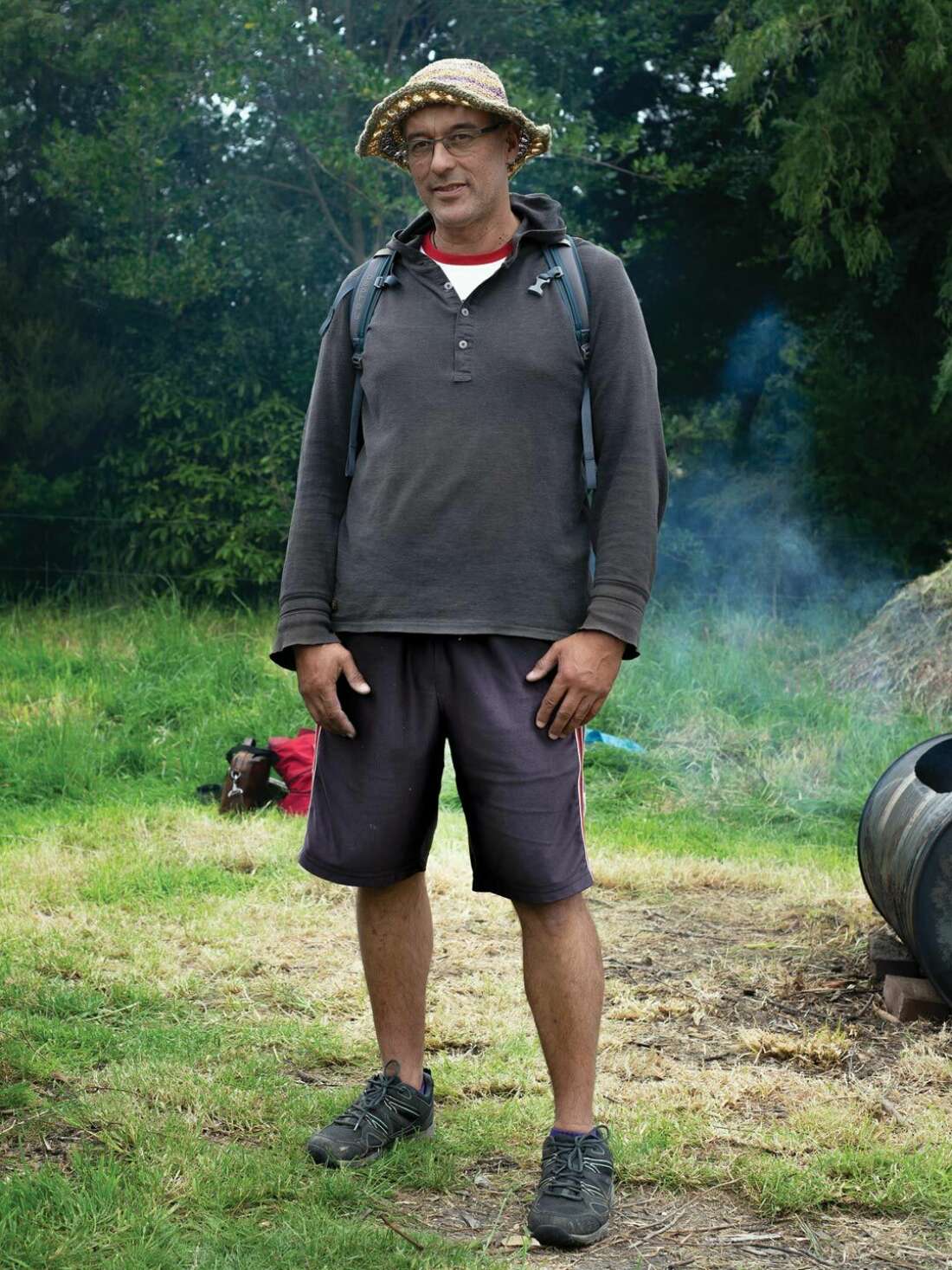
As I keep extending the food growing capacity of our section, I think a lot about spaces for food in our community. I look at underutilised parks and reserves, berms and verges, places where someone could pop a peach tree or a few spuds (see this published guide from PNCC for ideas: pncc.govt.nz.) I wonder what it would look like if we were to reclaim the feeling of Otangaki, if we started voluntarily weeding and cultivating these spots for abundance instead of allowing them to be colonised by a mindset of enforced tidiness, of clipped grass and sprayed borders. As I stop to pluck the growing tip of a vigorous puha, I remind myself that the weeds themselves are more often than not edible themselves and possibly far better for us than some of their civilised counterparts.
Lehndorf also notes the importance of maramatanga Māori – cultural wisdom and knowledge around food which is based in a particular location and its people. “A lot of traditional Māori food is from the ocean, and there’s a lot of Māori land around here where they hunt wild venison, so part of our food sovereignty picture might look like connecting in with iwi and those traditions.” A prominent local example can be seen in Wahine Toa, a group founded by Pania Te Paiho-Marsh of Tokomaru (theguardian.com/culture/video/2020/oct/03/pania-tepaiho-marsh-is-a-wahine-warrior-video) which empowers women through hunting and providing for their whānau.
I ask Lehndorf what she thinks of the common critique coming from some food experts about how getting townies to do a bit of gardening is a pointless endeavour in terms of the minute amount of food energy actually produced for the household versus the time and material expenditure. Some of these pronouncements were even issued during the height of lockdown, almost as if they had to head off some sort of wooly-headed insurrection by misguided salad enthusiasts.
“It’s not so much about the volume of food produced. It’s about seeding something in a person to give them a feeling of empowerment and hope and inspiration. That’s why it’s quite important if there’s someone new, to do something small that they’re likely to have success with. Have them feel really good about it and they’re more likely to say ‘I can do this!’ and go on to plant the next thing.”
Seasons have kept turning at the homestead and I’m now planting out the summer crops: corn, beans, pumpkins, tomatoes. I make a note to get some sweet corn over to the seed bank, as it’s a good time to plant and I have an heirloom variety that’s not a hybrid and whose seed can be collected and saved. The lockdown beds are being renewed and planted over to pumpkins and potatoes, but I’ll leave the mustard until the seed sets. I keep finding more corners and forgotten spots around the property where I can pop in a few more of whatever I’ve got on hand, looking at producing a surplus that we can take to the sharing shelf or put in neighbours’ letterboxes at harvest time.
The circular and sharing functions of the local economy are getting more attention since the pandemic hit, and the food networks are seeing perhaps the biggest effect. Lehndorf has noticed an uptick around the region in the number of people joining alternative food systems like community-supported agriculture (CSAs, also known to some as box schemes), and initiatives to further develop composting and resource redirection are getting greater support. “Anecdotally, I see far more people interested in composting, and in my role I’ve been pushing the ShareWaste app (sharewaste.org.nz/share-waste), which connects people who have the capacity to take more compost with people that can’t compost, because they’re in insecure housing, or apartments or student flats.”
Keeping food waste (and, broadly speaking, all biomass) out of landfill is an imperative if we are to truly regenerate our food systems. Lehndorf and I share our frustration that PNCC, while considerably better than the average NZ local body at recycling, fails to intercept most food and green “waste” from residents and turn it to compost. The informal solutions such as ShareWaste are filling gaps, but not addressing the systemic problem. For my part, if I had more hours in the day, some blank space, and a tractor, I would gladly take in everything that our village generates and deal with it holistically. I’m already repurposing tens of cubic metres of woody biomass from a local arborist – material that would have gone to landfill or onto a burn pile is instead growing mushrooms and feeding our soil in the form of rotting logs, deep mulch, and biochar.
Any time I talk with someone who is deeply involved in food matters, the gardening metaphors inevitably fly like dandelion fluff. We have fruitful discussions, try to get at the root of issues, talk about seeding ideas, weeding out models that don’t fit, all in a fertile ground for meta-dad jokes. Lehndorf wants to release a parting thought in the manner of a gardener spreading heirloom seed varieties to be nurtured and adapted to uncertain conditions. “I want to encourage radical reciprocity. Trusting that everything you give out will come back around in the long slow picture, and getting out of capitalist quid-pro-quo economics, transactional behaviour, and neoliberal trickery into grounded community generosity.”
Is this another flavour of paying it forward? “No, that still sounds transactional to me – it has the word ‘pay’ in it. It’s more mycelial than that, isn’t’ it? We’re all these fungal nodes, and we’re all feeding each other in interdependent ways. If I give to you, I might not ever get back from you, but I might get something from this person over here, so it’s way more random.”
And like the strands of mycelium underground, these connections are out of sight and usually overlooked. But they are there, weaving their magic over surprising scales of distance and time, facilitating exchanges which benefit a huge range of participants. As I walk around a corner of the orchard where I stacked a lot of rotting logs last year, I see that the recent warm spring rains have brought forth a flush of oyster mushrooms. I smile to myself and anticipate some butter, some garlic, and a cast iron skillet coming to the party, and marvel at the combination of factors that synchronise to manifest as abundance. How those fungal hyphae, after being locked down in the woody matrix of the stump, gain their freedom in the form of exuberant fruiting bodies, and how the trees around them are giving sugars and getting minerals in return. I breathe my gratitude that on our islands at the corner of the immense Pacific, we have so far mostly escaped the ravages of an indifferent pathogen, and that strands of resilience exist throughout our communities waiting merely to be fed so that they, in turn, will feed us.
By Phil Stevens. Photography: Xander Dixon